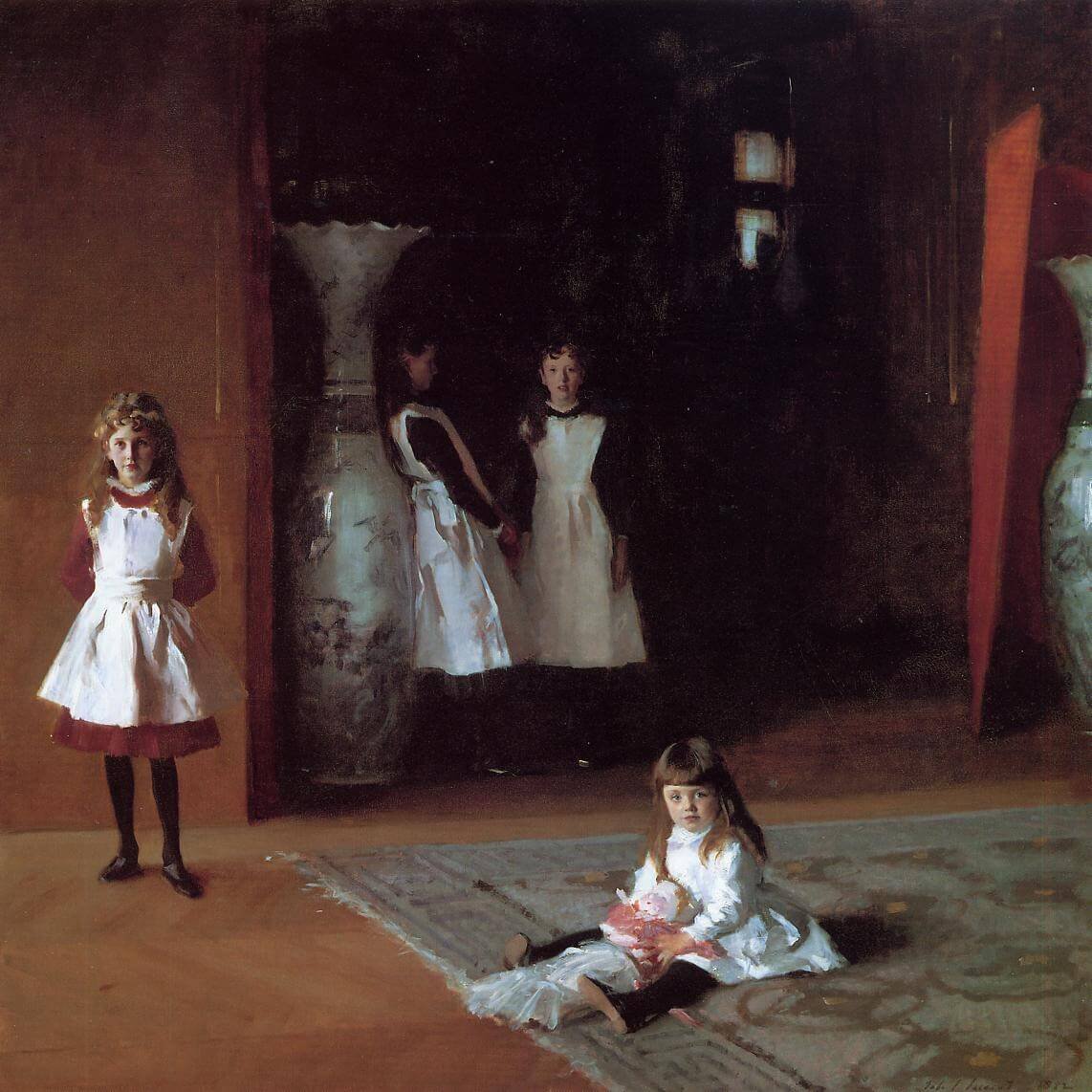
I’ve been reading John Singer Sargent scholar Erica Hirshler’s book Sargent’s Daughters: The Biography of a Painting. This book is about John Singer Sargent’s The Daughters of Edward Darley Boit, an unconventional 1882 portrait of Edward and Isa Boit’s four daughters. The book talks about the expatriate Boit family, the lives of the four girls, Sargent (one of my favorite artists ever), and the history of the painting itself.
I really enjoyed this book, and it really made me think about why this painting is so compelling. Hirshler addresses this question a lot, so let’s talk about it now. For one thing, the composition is unusual. Two of the girls are set so deeply in the shadow that one is barely visible, and you can’t see her face. More important, I think, is the fact that the girls don’t appear to interact with each other at all. To me, this seems to imply tension between the girls. It’s always seemed obvious to me that Sargent was trying to say something about discord within the family, so I was surprised to learn that this isn’t necessarily the case. According to Hirshler, interpretations of the painting have changed quite dramatically over the years. Apparently, the tone people tend to read in it today is very different from initial impressions. Though the painting originally gathered some criticism for its composition and lighting, the lack of relationship between the children wasn’t commented on. In fact, most viewers saw it as a very natural scene of four children at play. Only later in the twentieth century, with the popularity of child psychology and such, have viewers started to read any kind of message into the work. So maybe our interpretations say more about us than the painting. In that case, I wonder what it means that I relate most to the little girl who stands separate on the far left (Marie Louisa).

Unfortunately, not a lot of information is available about the lives of Florence, Jane, Marie Louisa, and Julia Boit, since any diaries or other writings they kept haven’t survived. Hirshler provides whatever exists. Knowing how these four girls’ lives unfolded definitely adds a new dimension to the work – one that Sargent couldn’t have possibly intended. I’ll leave those details for you to discover when you actually read the book. I’ll only tell you I enjoyed learning that Julia (the littlest sister) was a very talented artist. Some of her watercolors are reproduced in Hirshler’s book, and they are lovely. Her work isn’t in the public domain yet, so I can’t post it here.


